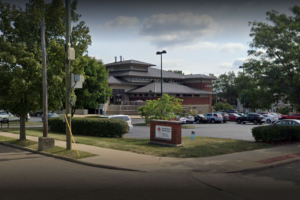What The Studies Say
Law enforcement, fire personnel, EMS, and dispatchers experience intense, unique job stressors, which impact their physical, mental, and emotional health, requiring specialized support.
These well-documented, ongoing stressors and conditions result in a high level of divorce, alcoholism, domestic disturbances, and, especially, suicide – per a 2015 study published in the Journal of Emergency Medical Services, *6.6% of 4,000 first responders completing a national survey had attempted suicide; more than 10 times the rate of the general population.
A 2017 University of Phoenix survey reported that *85% of EMS personnel had experienced symptoms related to mental health issues; *1/3 were formally diagnosed with either depression or PTSD. A 2016 study (University of Buffalo School of Public Health and Health Professionals) found that police officers are far more likely to suffer numerous health complications than are members of the general workforce, including depression, work-related injuries, strained relationships, and heart disease, cancer and mood disorders. Furthermore, the percentage of alcoholism among police officers is calculated to be twice as high as that of the general population.
of EMS personnel had experienced symptoms related to mental health issues.*
of first responders had attempted suicide*
were formally diagnosed with either depression or PTSD.*
National and local safety forces personnel have noted the recent added stressors of a rising distrust of first responders in many neighborhoods, and greater scrutiny than ever before as police officers are subjected to accusations of misuse of force. Departments are also finding that the increased number of returning veterans joining law enforcement and fire departments, many of whom – especially those who did multiple tours – need additional or more in-depth general and substance abuse counseling encounters.
Safety forces personnel have found that seeking out the needed help is further complicated given their unique population. In addition to a general stigma attached to admitting mental health problems, first responders are especially reluctant to admit that they need help. They fear that it may create the perceptions that they are showing weakness and unable to perform required duties and instills in them a fear of possible consequences, such as being overlooked for a promotion.
First, most departments do not provide any training on the subject.
Education is almost non-existent in awareness, prevention programs, and where to go for confidential counseling and support. Second, in the structured working and living environment of a police station, EMS/firehouse, or dispatch center emotional topics, religious convictions, and personal opinions make it hard for individuals to talk about their personal problems and concerns. Third, there is a lack of admission by leadership and the rank and file that the problem exists. Thus, what we have is circular logic where “because we don’t speak about it, there must not be a problem. Since there is no problem there really is no need to think or talk about it.”
Retirement presents additional unique challenges to many members of the safety forces. Most safety force members retire at a relative early age by completing the years of active duty or needing to retire early due to injury or illness, usually related to their job. After spending a career serving others newly retired safety forces are placed in a situation where their skills are perceived as unneeded. That is, they no longer follow a routine of working with the same crew, shifts, hazardous life-threatening, and, in many cases, lifesaving experiences. On top of this, the new retiree is faced with new experiences such as long periods of down time, more time at home, and more time focused on financial problems. After years of being the person whose major reason for being was to help others, it may become very difficult to change roles from providing help to needing help.
Why We Do What We Do
DEPRESSION & PTSD
Nearly 1/3 [of EMS personnel] were formally diagnosed with either depression or PTSD.
ALCOHOLISM
The percentage of alcoholism among police officers is calculated to be twice as high as that of the general population.
SUICIDE
6.6% of 4,000 first responders completing a national survey had attempted suicide; more than 10 times the rate of the general population.
COMMUNITY STRESS
There is a rising distrust of first responders in some communities and greater scrutiny in use of force
VETERANS
An increased number of veterans are joining the safety forces, often bringing complicated needs and dynamics with them.
RETIREES
Retirees carry unique stressors from a career spent in physically and mentally hazardous situations.
“First responders are usually the first on the scene to face challenging, dangerous, and draining situations. They are also the first to reach out to disaster survivors and provide emotional and physical support to them. These duties, although essential to the entire community, are strenuous to first responders and … put them at an increased risk of trauma.”
(2018 SAMHSA Research Bulletin)
What We Do
Critical Incident Stress Management (CISM) for ALL first responders AND their families including:
- Confidential mental health counseling for individuals and couples
- PTSD, Anxiety & Depression, Suicide Prevention
- Substance abuse intervention
- Emergency response and intervention for critical incidents
- Professional education for departmental peer support
- Training through the Ohio Peace Officer Training Academy
- Chaplaincy services – visitation, funerals, weddings
- Limited material assistance
- Outreach to retirees
- Year-End Holiday Activities




